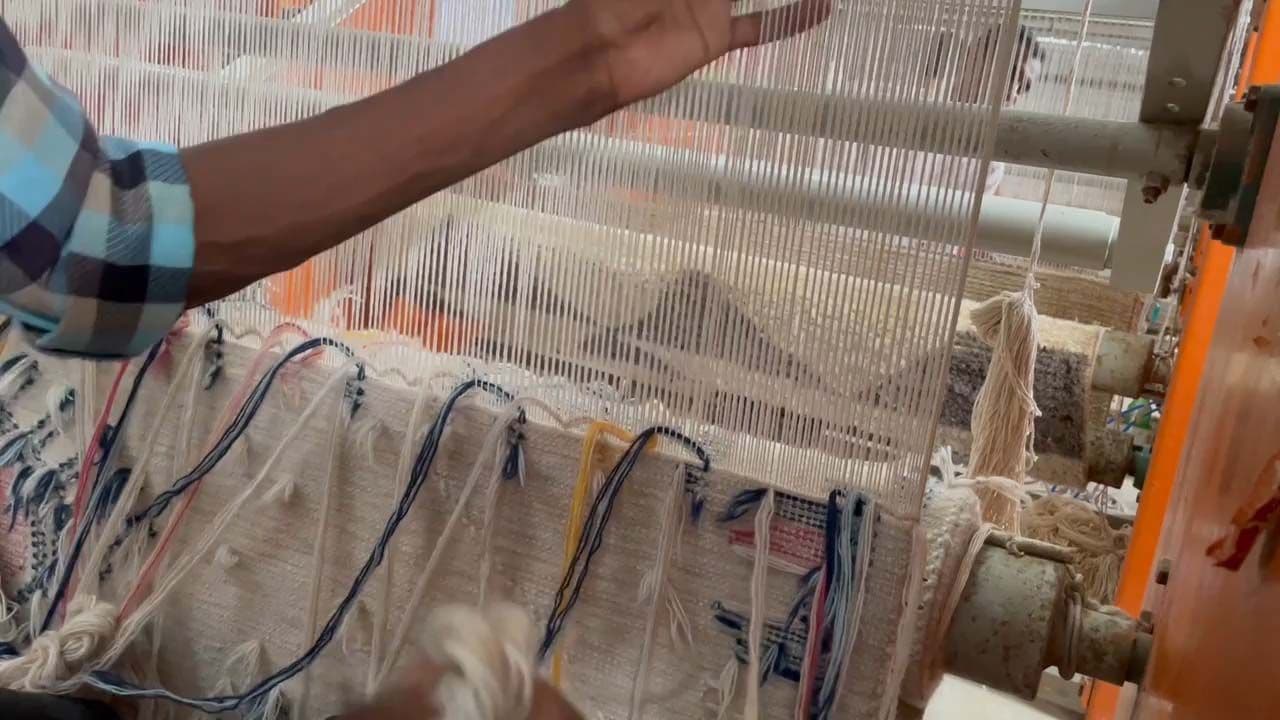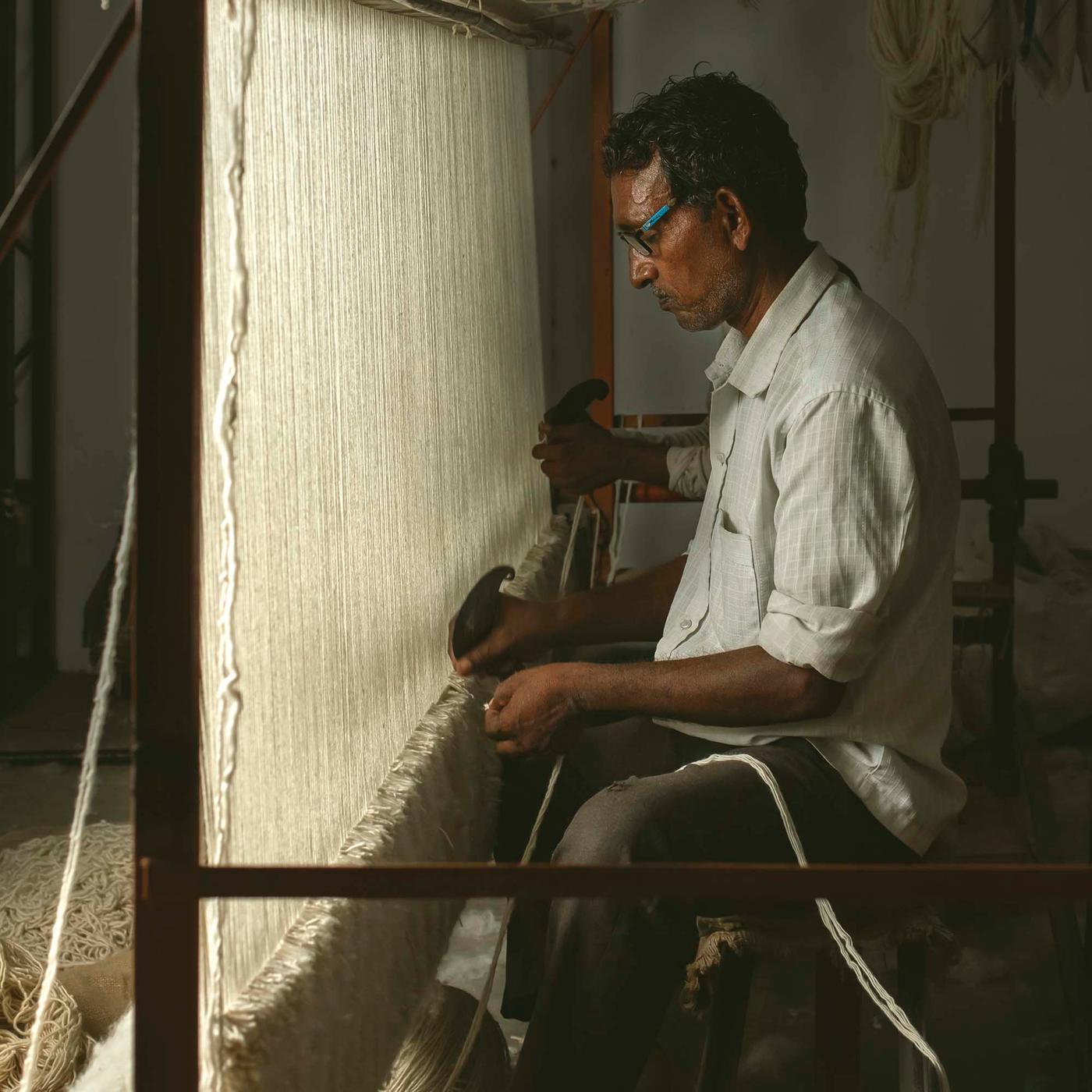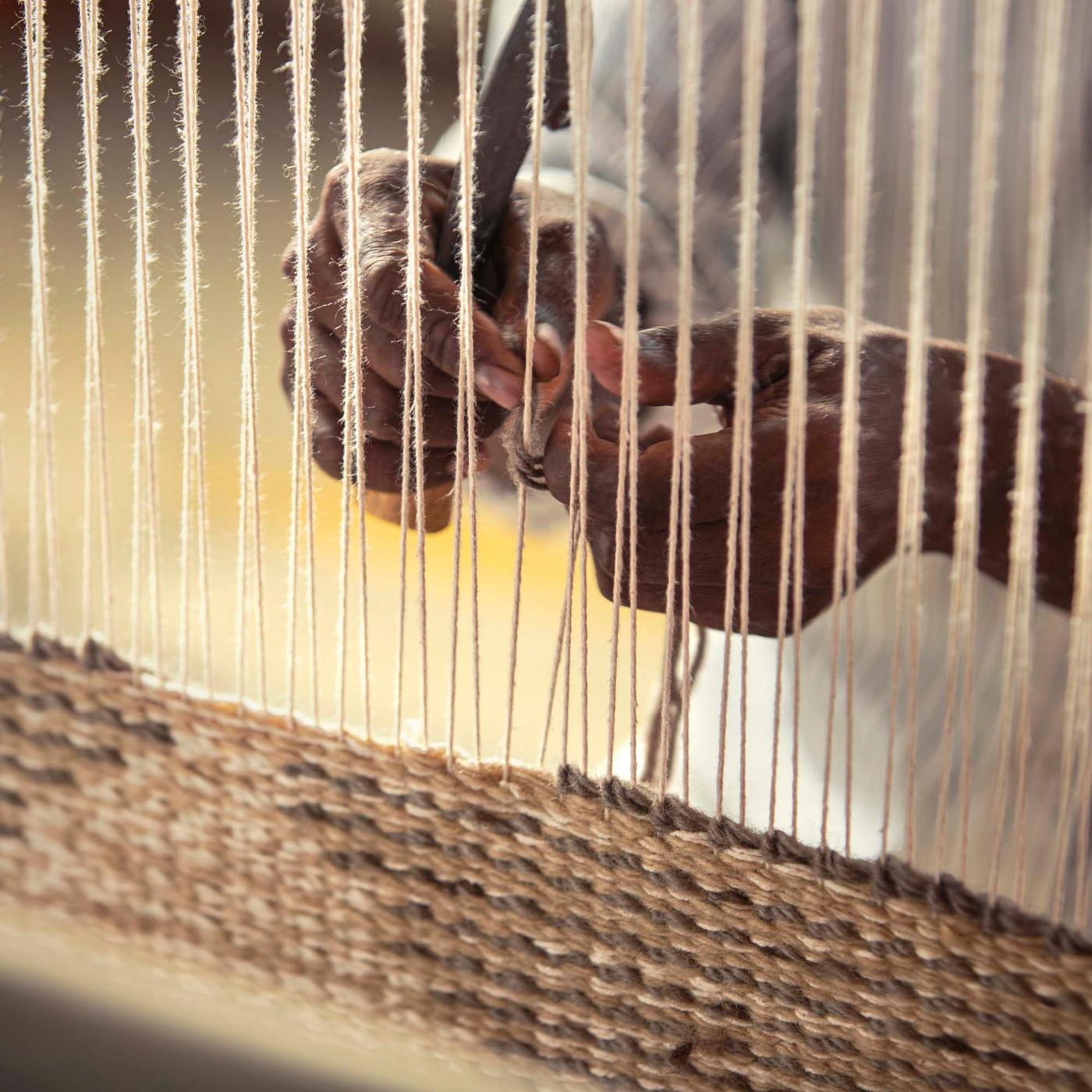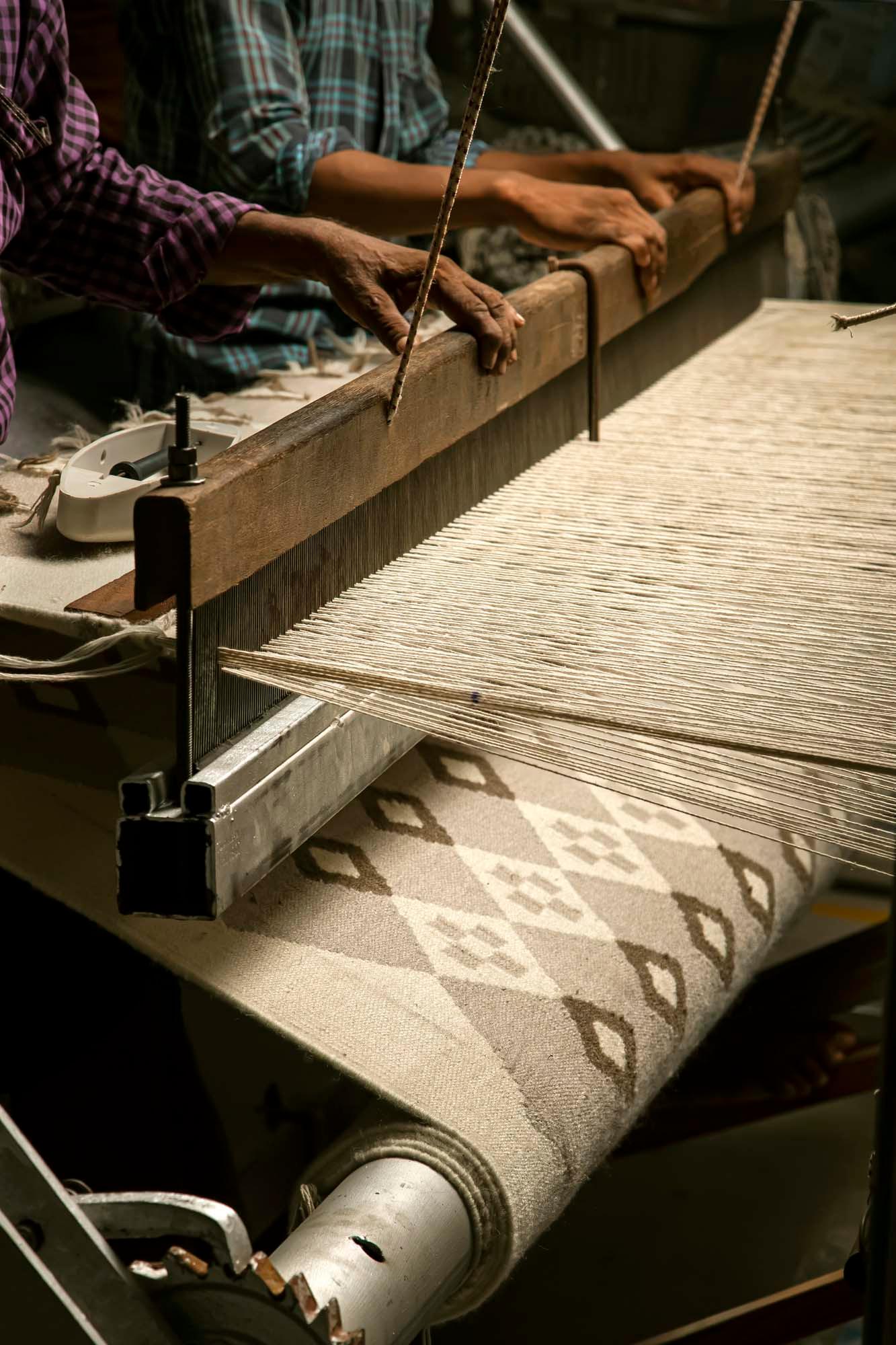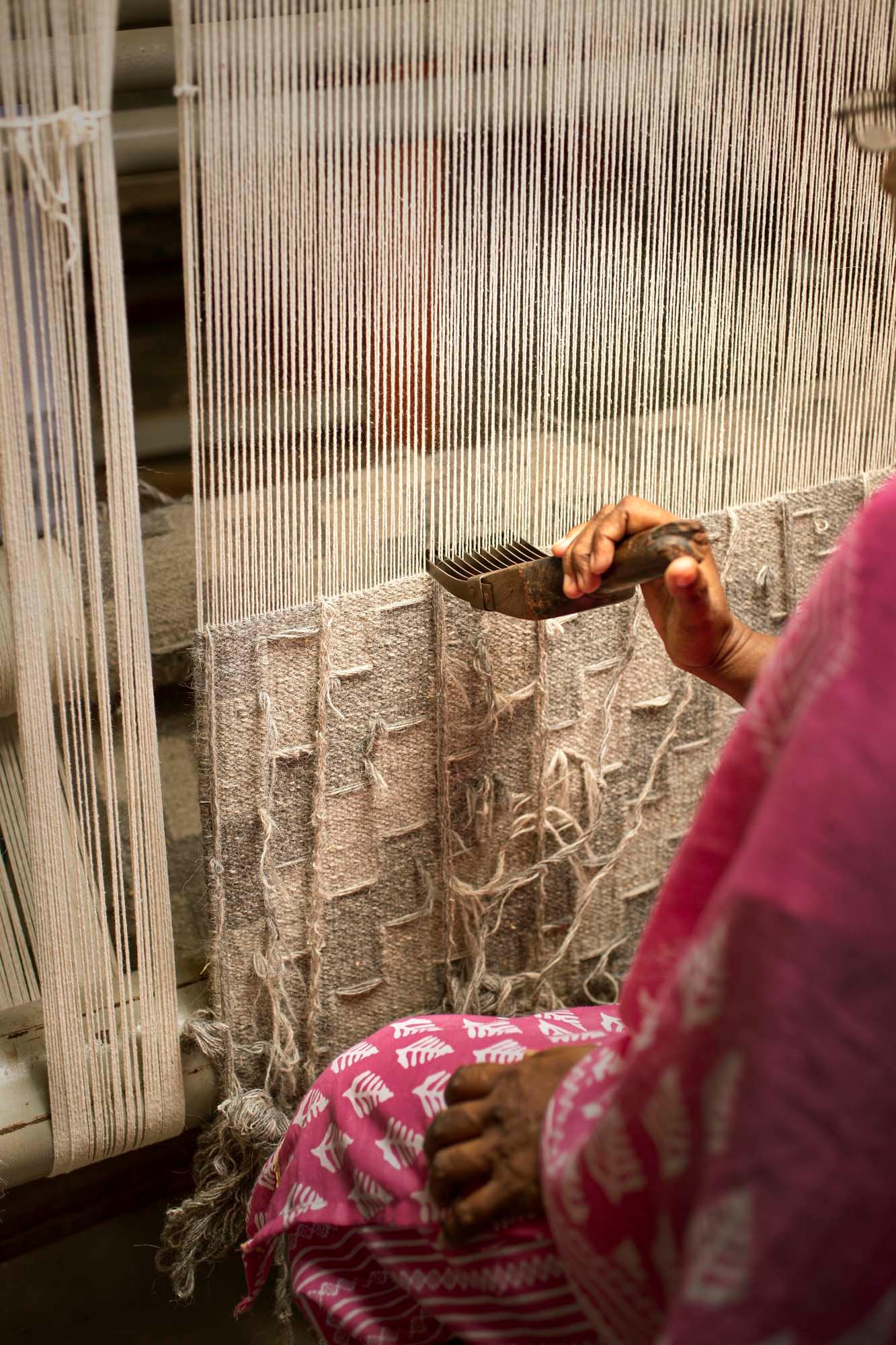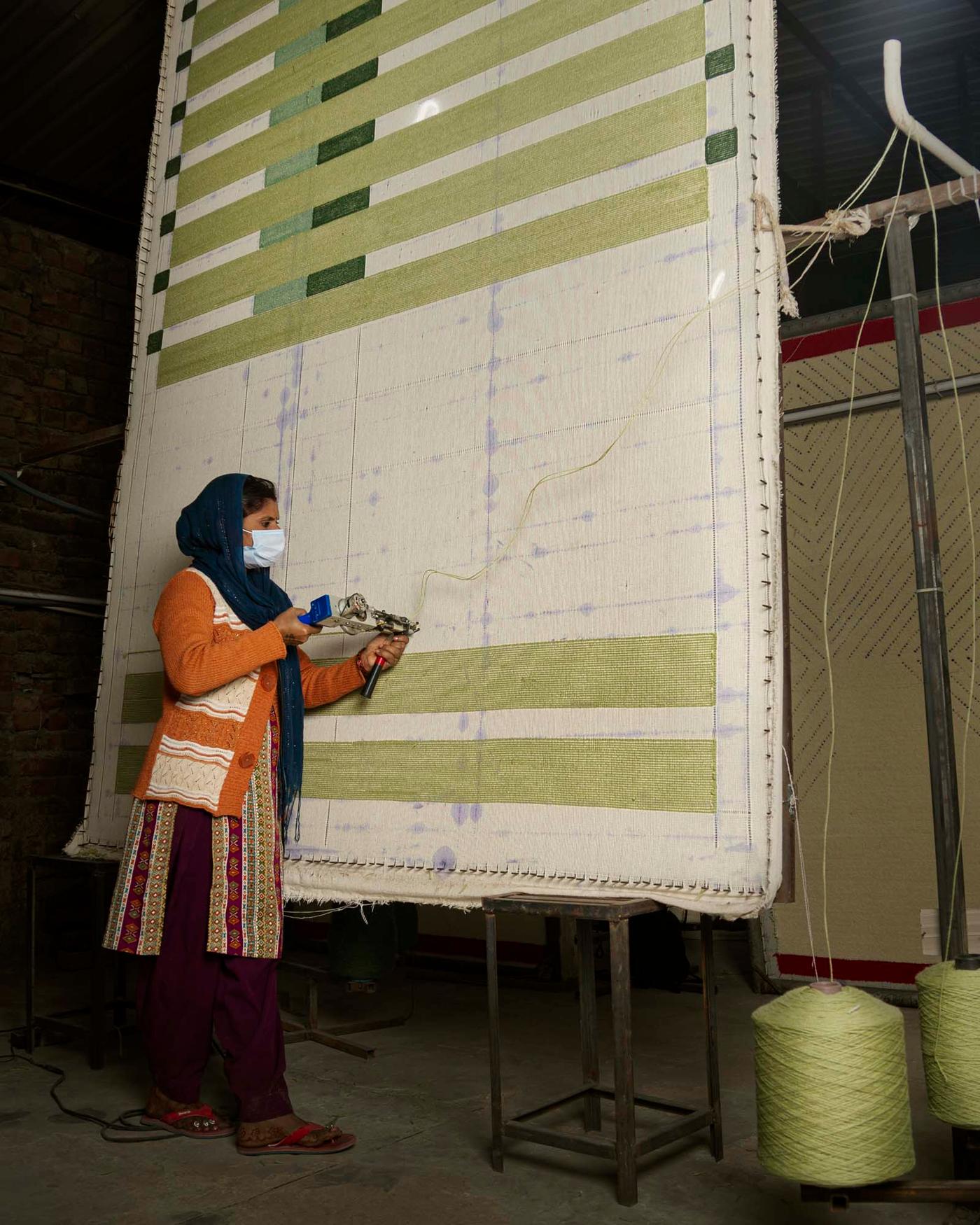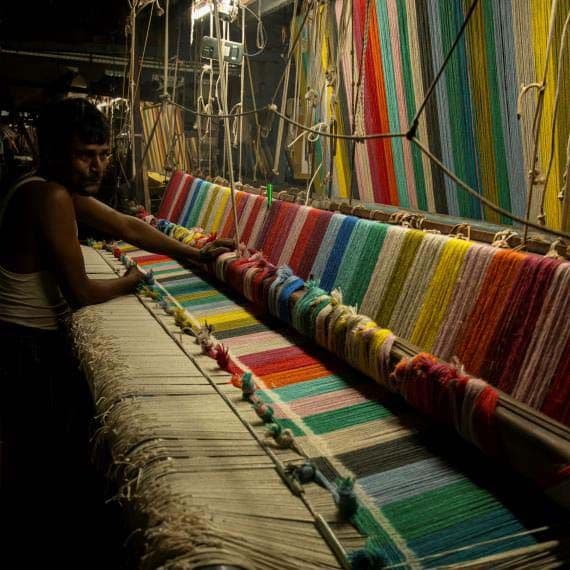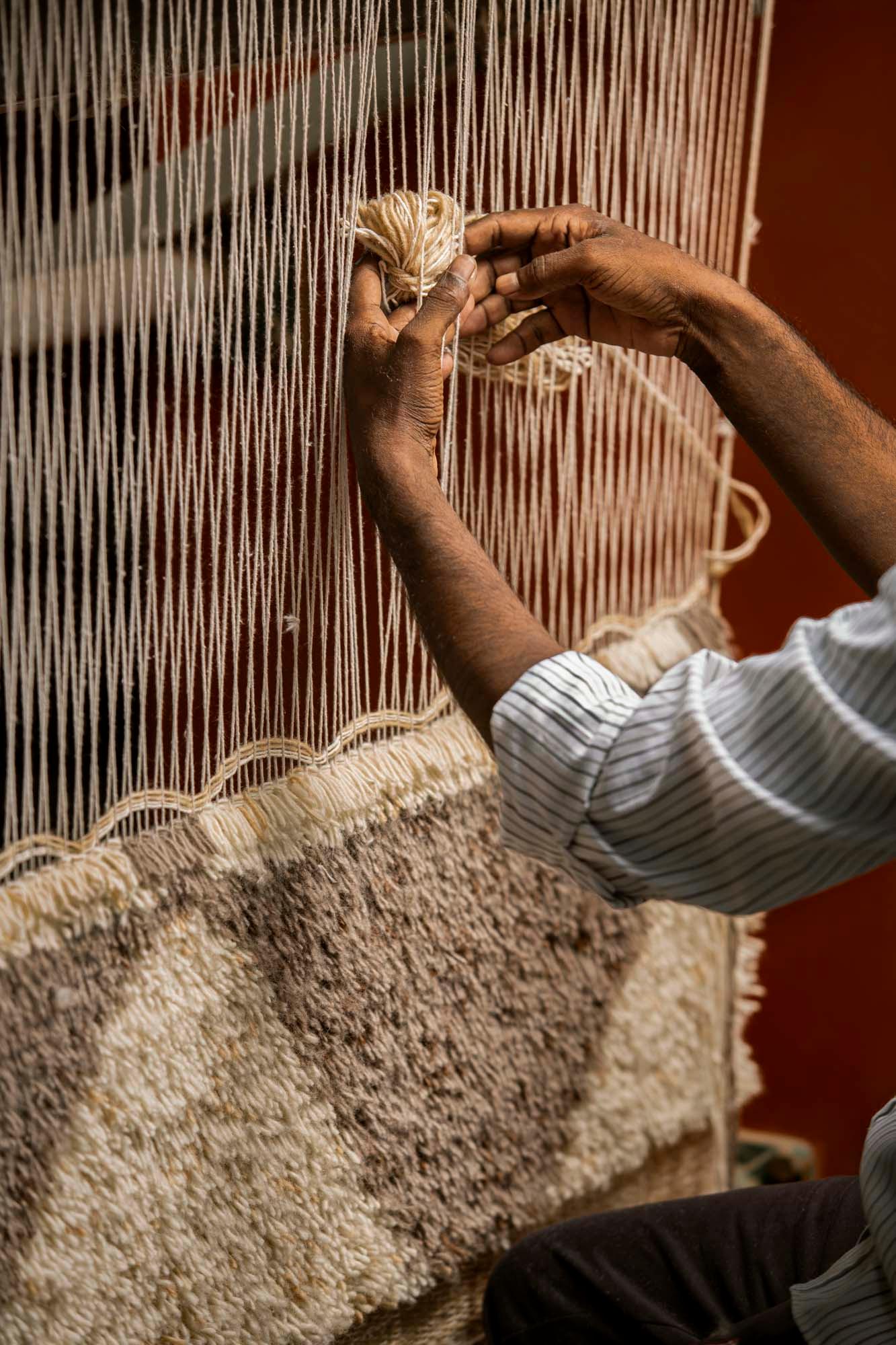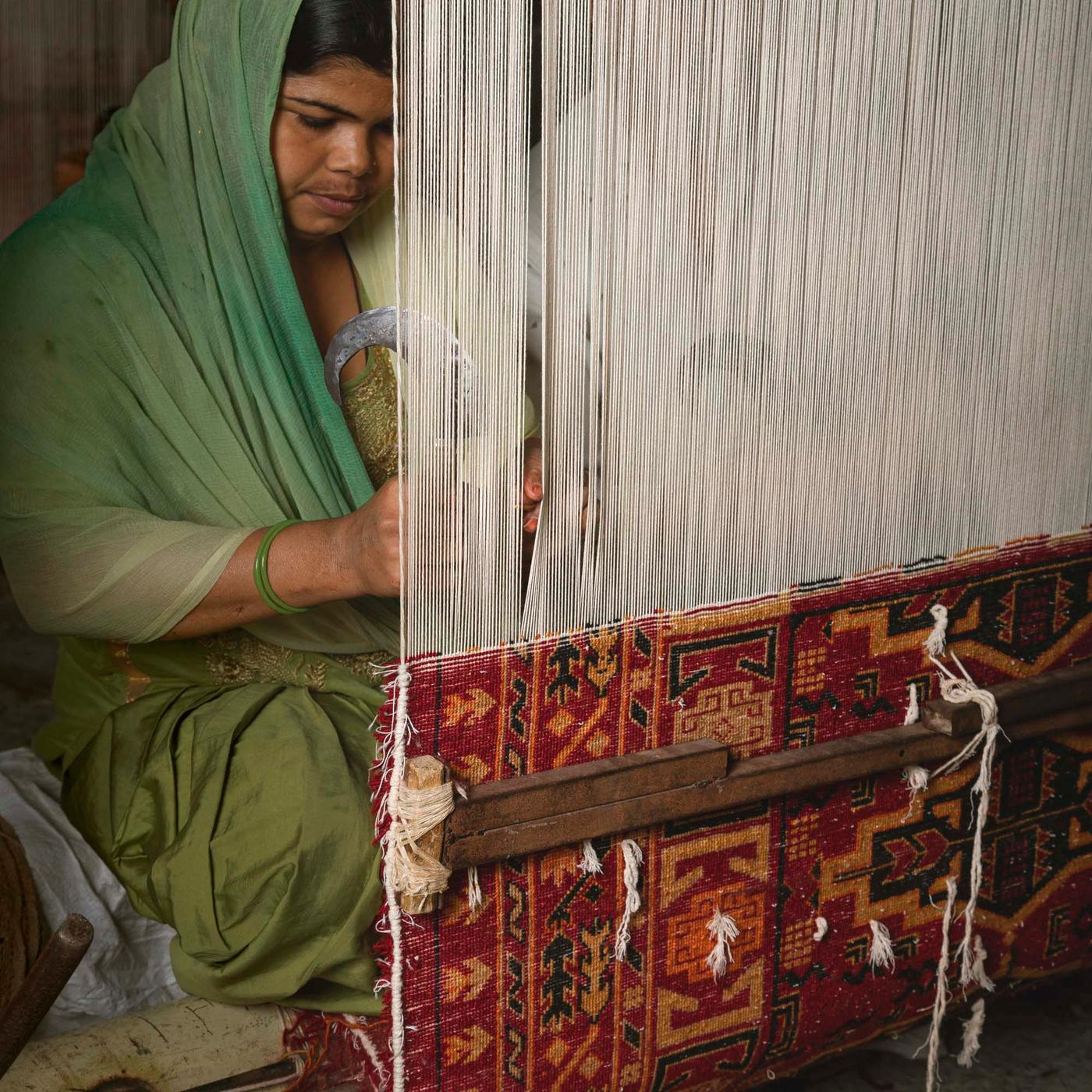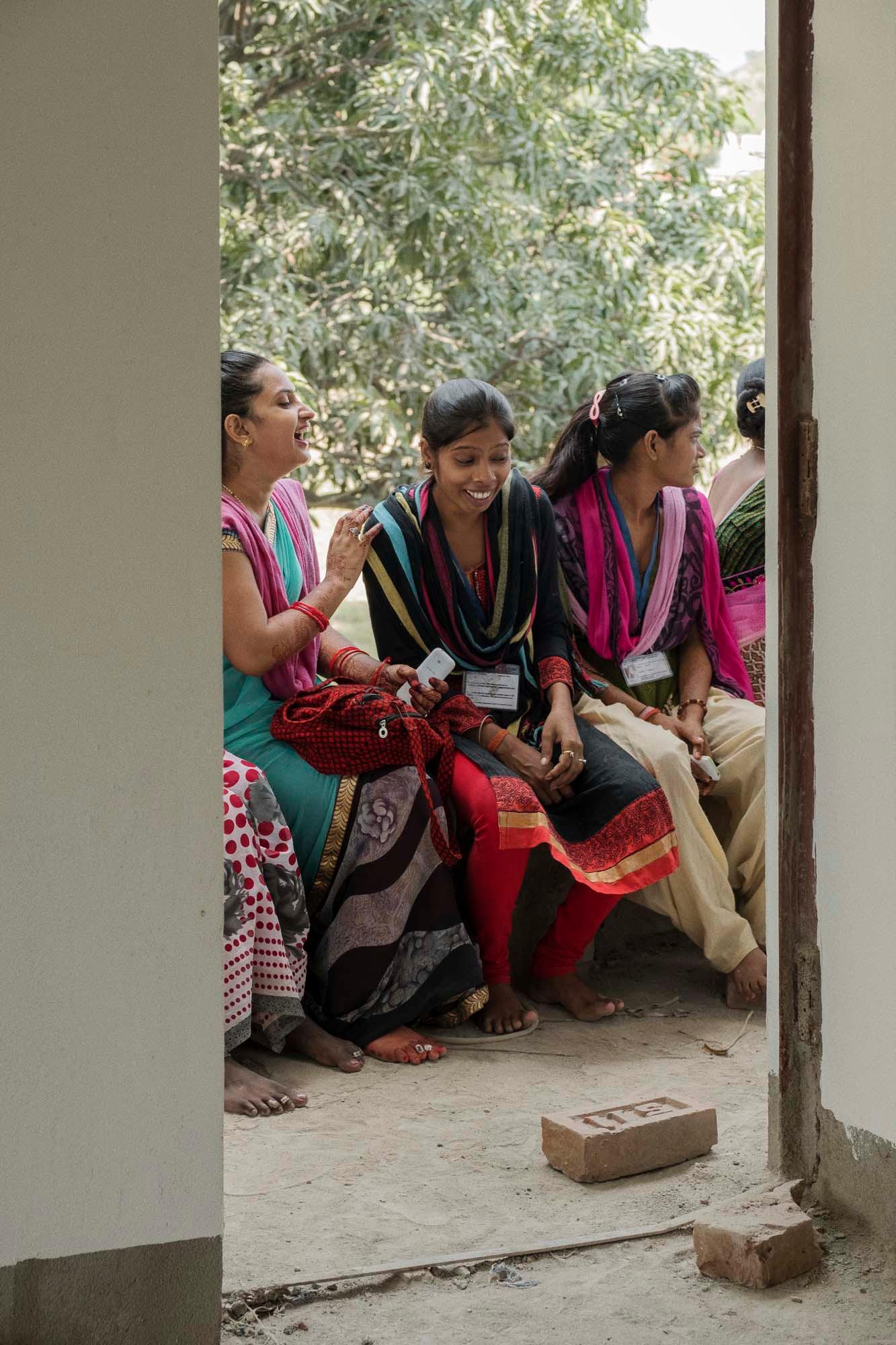IKEA handmade rugs
Beautifying floors and enriching livelihoods
There's something special about handmade rugs, each one has a unique story and character. But more important, at IKEA we're working to keep time-honoured weaving traditions alive by supporting skilled artisan weavers through their work.
Rugs furnish our homes, grace our hearths and bring an element of colour and style to any room. They provide warmth under foot and even reduce noise. Although most rugs today are produced industrially, some of our rugs are handmade, loved for their unique designs, patterns and textures, which cannot be achieved by machine.
The origins of our rugs
Our handmade rugs are produced in Bangladesh and India, the world’s leading producer of handmade rugs. Woven, knotted and tufted from wool, jute, viscose and wool blends, each rug is made by skilled weavers.
In good hands
Following the strict rules and regulations of our IWAY supplier code of conduct, IKEA secures handmade rugs from weaving centres run by partners who share our values – partners who are actively working to secure and develop work conditions in areas such as salaries, medical care, gender balance and ergonomics. Our goal is to help improve the working conditions for rug weavers, to ensure that the traditional methods of weaving exist for many years to come.
"I love handmade rugs because it’s a craft rooted long back in history. In a world where more of our surroundings are made by machines, I believe things made by hand should be treated respectfully. Different cultures have slightly different designs depending on various techniques, and as a designer it’s a passion I have to combine these elements into modern designs."

Pit loom
The pit loom, as the name suggests, is positioned over a pit, and the wooden frame is angled for vertical weaving. The artisan sits underneath the frame, and controls it with foot pedals and their hands, crafting rugs with intricate patterns and designs. This setup enables working from both above and below the frame, achieving a very tight weave. Producing a rug with this technique takes about 2-3 days, resulting in a unique work of art that can add character to any home.
Panja weaving
Panja weaving is a centuries-old method for making stunning and intricate rugs. A wooden frame with vertical threads is required, and the weaver uses a claw-like tool known as a "panja”, to weave horizontal threads tightly through the vertical ones. Panja weaving is time-consuming – it usually takes 4-5 days to complete a rug. It involves considerable skill and attention to detail, resulting in one-of-a-kind works of art of exceptional quality and durability.
Tufted
With hand-tufted rugs, the design is created on a canvas using a tufting gun. This tool pushes strands of wool through the canvas to create loops on the surface. They form a pile, which can be kept shaggy, or cut to create a uniform surface. The loops are secured with a layer of latex on the back, then finished with a piece of fabric glued to it. The technique allows for the efficient production of rugs in various colours and patterns in a relatively short amount of time.
Loom woven
Hand loom woven is the most traditional and conventional method of rug weaving, where two sets of yarns are interlaced via a wooden loom. Because of its size, hand looms are operated by three people working together. Hand looms are mostly used for simple patterns such as stripes and checks, as well as plain rugs with a flat or high pile texture.
Hand knotted
Hand knotting is a complex process that gives unique, long-lasting rugs. A skilled weaver ties individual knots tightly around pairs of threads to form an intricate pattern. After completing each row, the weaver compacts the knots with a comb or beater. The process is repeated until the rug is completed, which takes 15-20 days, depending on the complexity of the design. Hand knotting creates one-of-a-kind rugs, with intricate patterns that are unmatched by any other technique.
A supportive work environment
Rug industries are mostly run by small businesses, with weavers often working from home. Although skills and techniques are passed on through generations, the weavers can lack business training, making them vulnerable in a system involving so many middlemen. Our handmade rugs are produced in factories called weaving centres, where it’s easier for weavers to develop and share craft skills, earn a decent wage and work in a safe and inclusive environment. Located in both urban and rural areas, our weaving centres provide workers with access to new tools and better processes.
Getting the balance right
As the number of skilled weavers decreases, women are vital to the long-term sustainability of the industry. Together with our partners we strive to achieve greater gender equality in a traditionally male dominated industry. Our suppliers actively recruit female artisans and offer safe, secure working conditions, along with benefits such as creches across all centres to attract more women into the workplace.
“There’s something extraordinary about handmade rugs. They have a soul and every rug has its own unique character.”

Want to know more about handmade products?
Whether you're interested in mouthblown glass, the materials we work with or how we work with artisans around the world, you'll find what you're looking for at link below.
